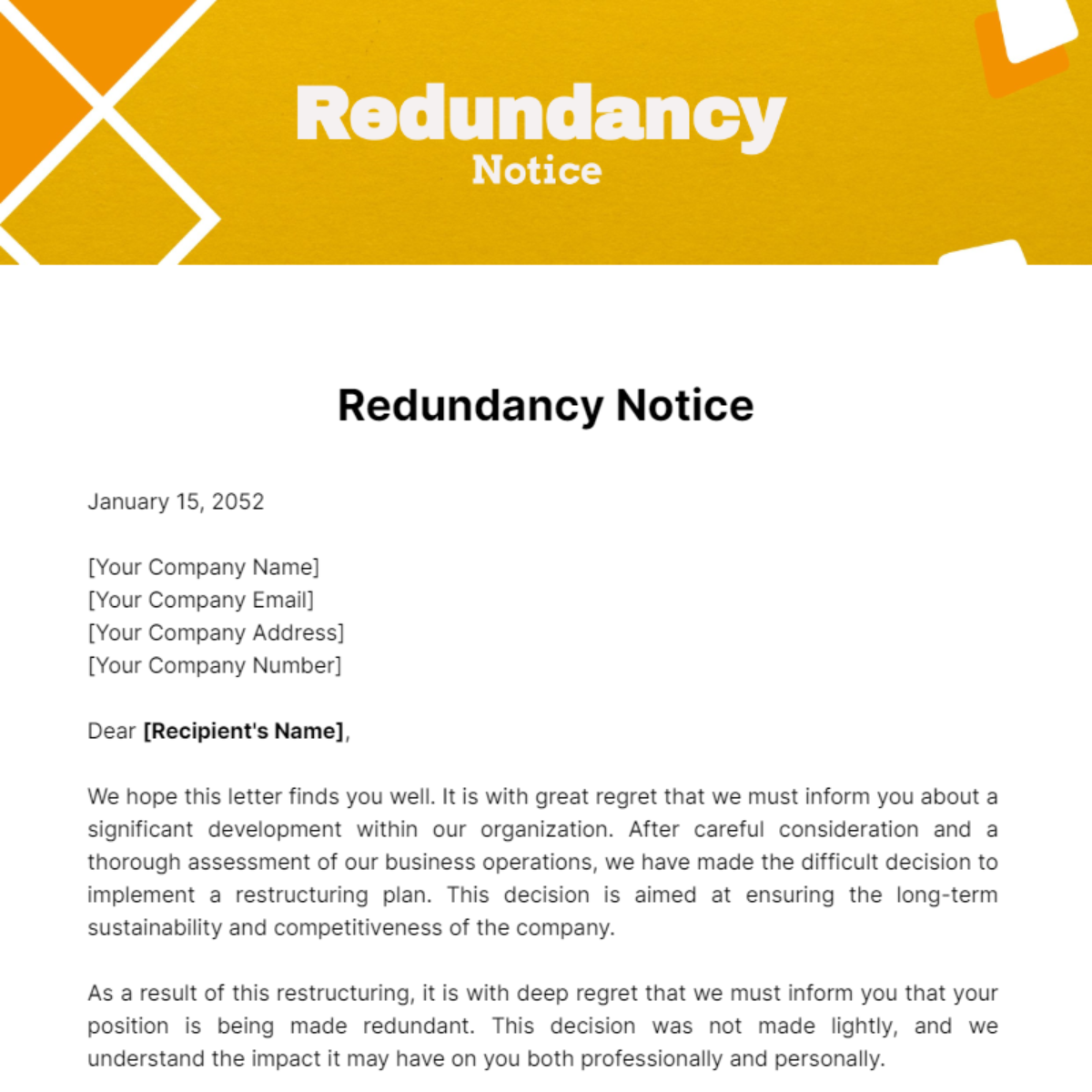Your Rights to Redundancy If Company Goes Bust: UK Employee Protections
Your Rights to Redundancy If Company Goes Bust: UK Employee Protections
Blog Article
Checking Out the Interaction In Between Company Redundancy and Business Adaptability for Future Development
In the vibrant landscape of today's business world, the elaborate relationship between firm redundancy and organizational flexibility emerges as an important factor for sustained development and success. Business frequently face the difficulty of striking a fragile balance in between preserving a level of redundancy to minimize risks and fostering flexibility to react swiftly to the ever-evolving market needs. This fragile interaction holds the essential to not only enduring in rough times yet additionally flourishing in the face of uncertainty. As we explore the complex measurements of this interplay, fascinating understandings into just how organizations navigate these complexities to pave the method for future development await.
Relevance of Firm Redundancy
Firm redundancy is an essential aspect that improves organizational durability and reduces operational threats. By including redundancy actions within the organizational structure, firms can much better hold up against unanticipated disruptions and fluctuations in the organization environment. Redundancy offers as a tactical barrier, permitting firms to adjust and respond effectively to unanticipated challenges without compromising crucial procedures.
One key facet of the value of company redundancy is its role in making certain connection throughout times of dilemma. When confronted with abrupt changes or emergency situations, redundant systems, resources, or workers can tip in to preserve critical features and prevent extensive disturbances. This connection not only safeguards the company's reputation and consumer depend on yet likewise minimizes economic losses and operational downtime.

Strategies for Organizational Flexibility

Another vital method is purchasing technology and infrastructure that can sustain flexibility and scalability. Carrying out electronic devices, automation, and data analytics can improve operations, improve effectiveness, and give beneficial insights for informed decision-making. In addition, creating versatile organizational frameworks that enable fast adjustments to market dynamics and customer needs is necessary for remaining competitive in a swiftly evolving environment. By proactively determining potential disruptions and opportunities, companies can proactively adapt and prosper in an ever-changing service landscape.
Balancing Redundancy and Adaptability
Accomplishing a harmonious stability Learn More between functional redundancy and organizational adaptability is paramount in navigating the complexities of a dynamic service atmosphere. Striking the best balance between redundancy and flexibility is a delicate process that requires a deep understanding of the company's click this objectives, market characteristics, and risk tolerance.
To attain this balance, business need to carry out regular evaluations of their procedures to determine locations where redundancy is necessary for risk mitigation and where flexibility can drive innovation and growth. Implementing flexible frameworks, fostering a society of constant understanding and renovation, and encouraging open interaction across all degrees of the company are key approaches to balance redundancy and adaptability efficiently. By aligning these two crucial aspects, business can place themselves for sustainable growth and success in an ever-changing organization landscape.
Instance Research Studies on Adjustment Success
In examining circumstances of effective business adaptation, it ends up being obvious that the interaction between operational redundancy and versatility is a specifying variable in forming resilient services. One engaging case study is that of Netflix. Initially a DVD rental solution, Netflix demonstrated impressive flexibility by transitioning into a streaming platform when digitalization disrupted the industry. By strategically purchasing innovation and material creation, Netflix not only thrived but survived in a swiftly progressing market. Another standout example is Amazon. Starting as an on the internet bookstore, Amazon continuously adjusted its organization design, increasing into varied industries such as cloud computing and artificial knowledge. This adaptability enabled Amazon to stay in advance of competitors and fulfill transforming consumer needs. Last but not least, Adobe gives a notable illustration of effective adjustment. The company shifted from selling software program licenses to a subscription-based version, ensuring reoccuring earnings streams and boosted client interaction. These study highlight the importance of operational redundancy combined with organizational flexibility in promoting long-lasting development and competition.
Building Strength for Future Development
Building durability for future development needs a critical positioning of operational procedures with market characteristics and emerging patterns. Business should adapt to altering settings by fostering a society of adaptability, technology, and constant improvement. Durability entails not just jumping back from obstacles however her latest blog also proactively planning for future difficulties. One crucial element of building resilience is purchasing robust risk monitoring techniques to reduce potential interruptions. This consists of circumstance preparation, diversifying supply chains, and establishing backup prepare for numerous backups (who pays redundancy money).
Furthermore, cultivating strong relationships with stakeholders, such as consumers, staff members, providers, and the neighborhood, is crucial for weathering uncertainties and maintaining trust fund and assistance throughout turbulent times. Efficient communication and openness play a crucial duty in structure strength, as they help align expectations and facilitate collaboration in navigating uncertainties.
Moreover, organizations require to prioritize knowing and development initiatives to upskill workers and equip them with the required devices to adjust to altering conditions. By purchasing their workforce, business can boost their flexibility and agility, ultimately enhancing their resilience for lasting future development.
Verdict

In the vibrant landscape of today's business world, the elaborate connection in between business redundancy and business adaptability arises as an essential variable for sustained growth and success. Business typically face the obstacle of striking a delicate equilibrium between maintaining a degree of redundancy to mitigate dangers and cultivating adaptability to respond quickly to the ever-evolving market needs.To accomplish this equilibrium, business require to carry out routine analyses of their procedures to recognize locations where redundancy is required for risk reduction and where versatility can drive advancement and development.In verdict, the interaction between company redundancy and business flexibility is essential for future growth. Building durability with a mix of redundancy and flexibility will make sure that business are prepared for the challenges of the future.
Report this page